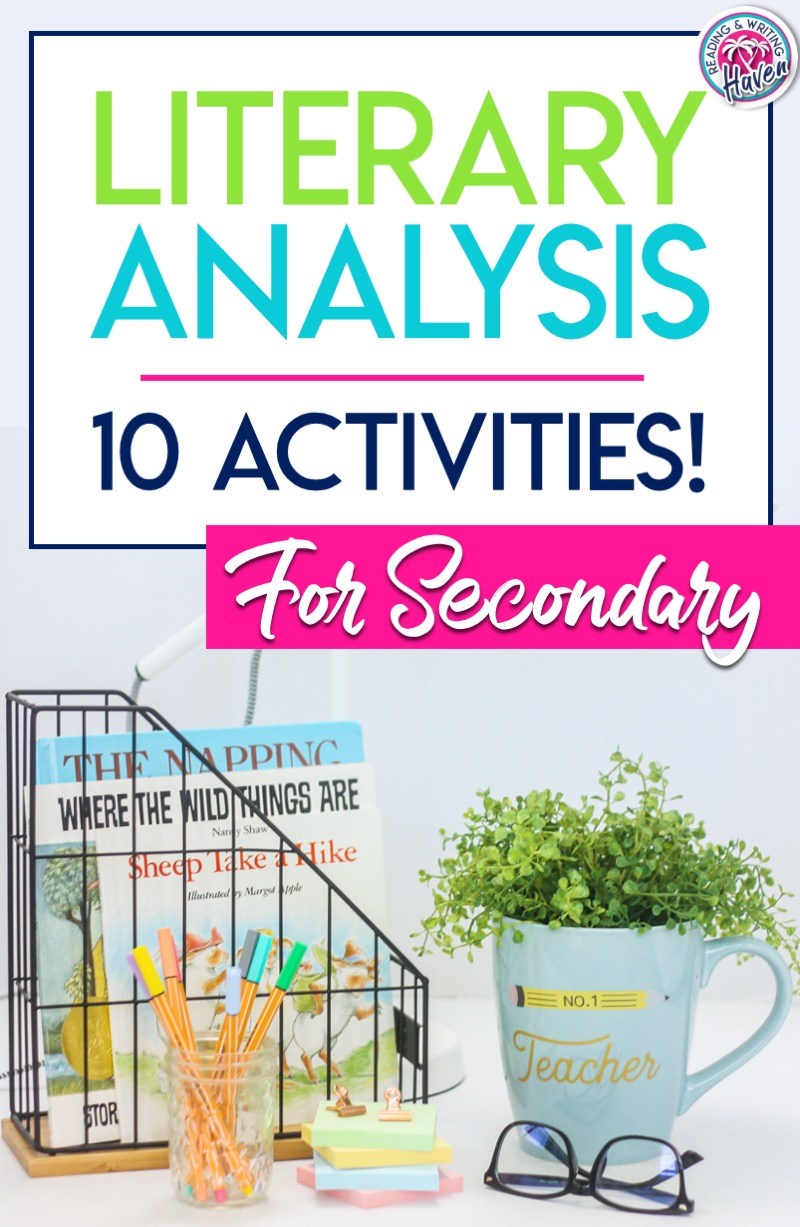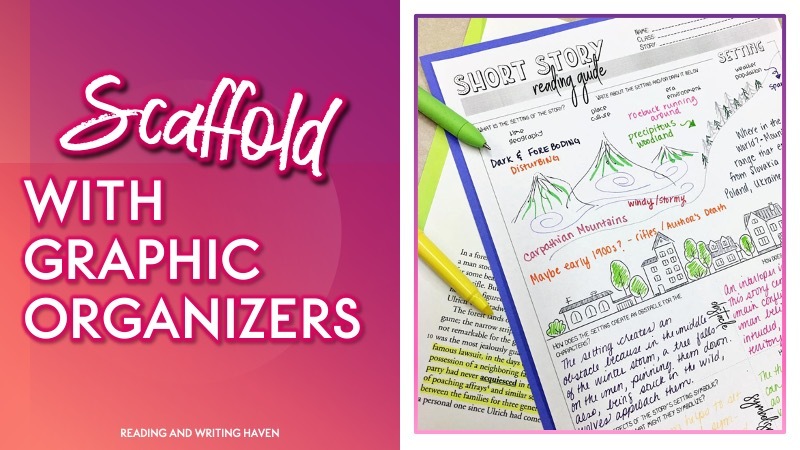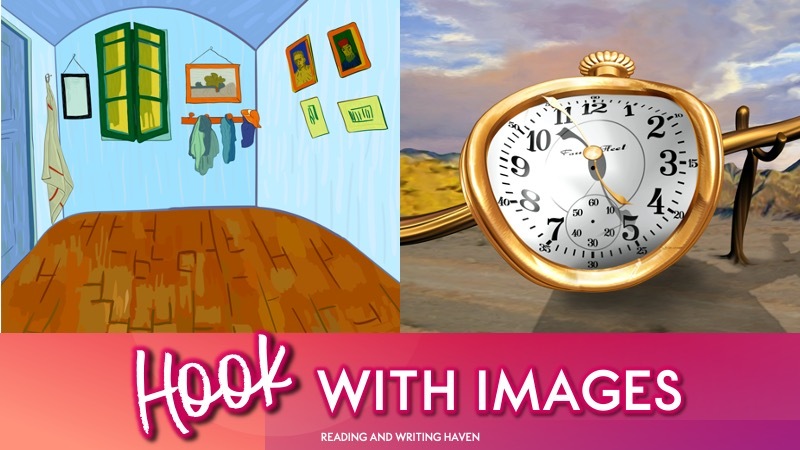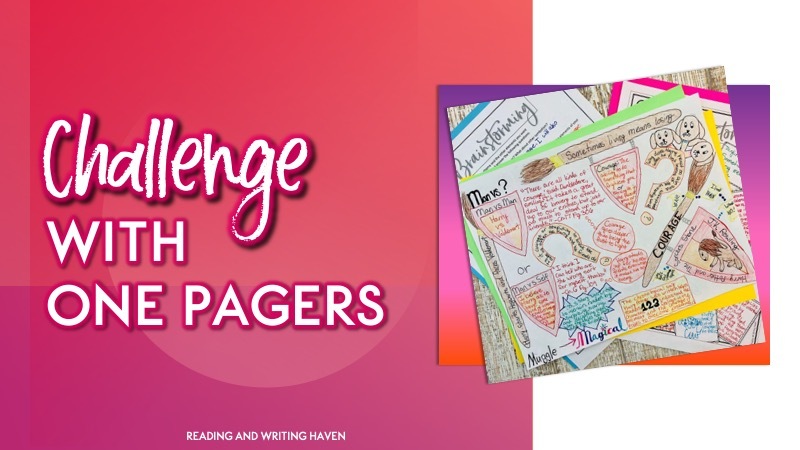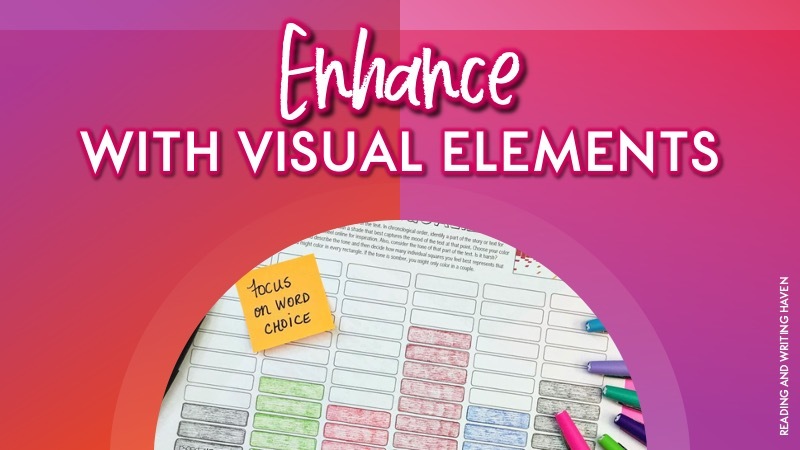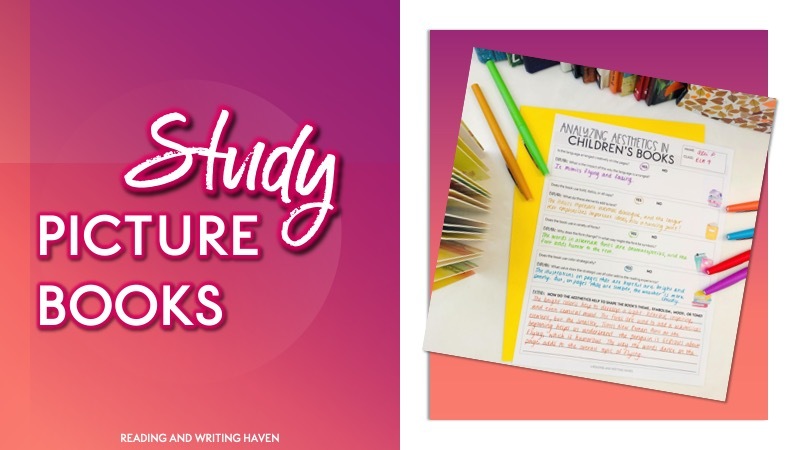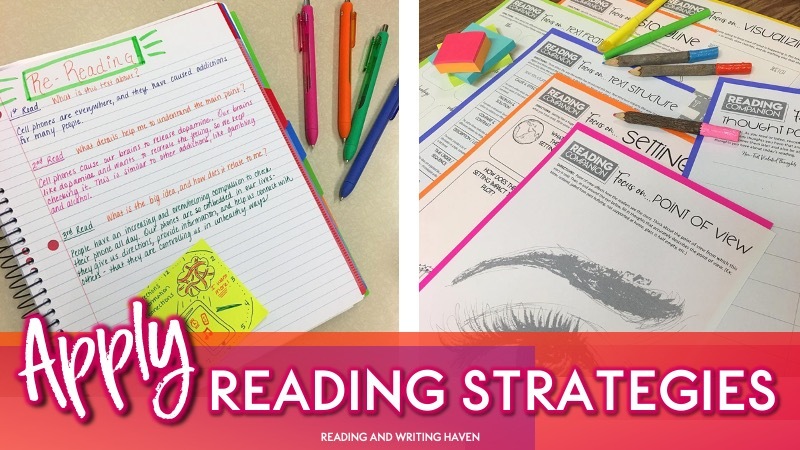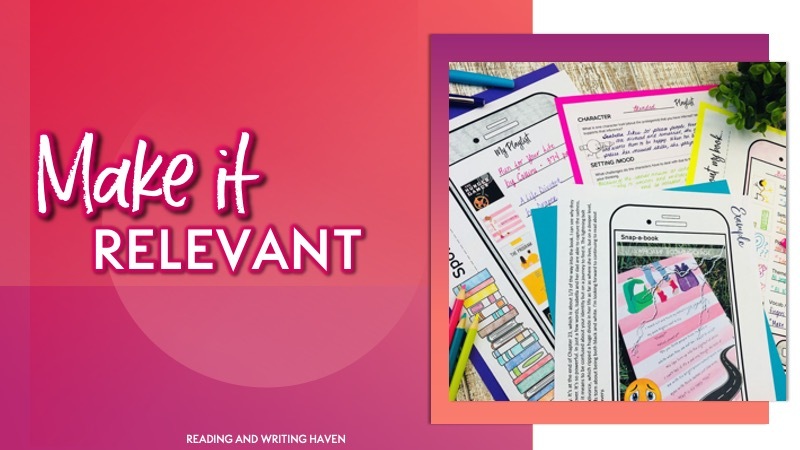10 of the Best Literary Analysis Activities to Elevate Thinking
Inside this Post: Ready to elevate your literary analysis lessons? This post is full of engaging and effective activities to help students master literary analysis topics.
Literary analysis has become the beating heart of English classes around the world. When students read a text, we want them to peel back the layers one by one, appreciating the deeper meaning that lies within each sentence. As English teachers, many of us connect with texts easily and persevere through complex literature naturally. For our students, this process is not always as enjoyable.
In this post, you’ll find suggestions for elevating thinking with middle and high school students. These ideas can be used with paired or individual texts and can be differentiated to reach a variety of learners.
Engaging and Effective Literary Analysis Activities
Literary analysis elements are best when they are engaging and elevate thinking without frustrating students. I’ve played around with different approaches, and these are the key elements that resonate most with students.
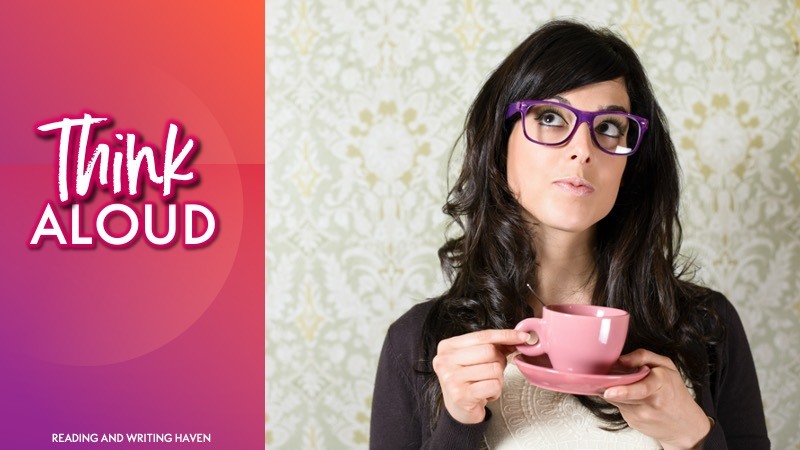
1. Thinking Aloud
One of the best feelings as a teacher is knowing you have an entire class full of teenagers engaged. It’s amazing how every single student in a classroom is in tune with think alouds. Something about making thinking transparent challenges students of all readiness levels. With literary analysis lessons, I love providing think alouds with the whole class. Whether we do this via face to face instruction or by creating a short video for virtual classrooms, we have to model our thinking.
Here’s an example with “All the world’s a stage” from William Shakespeare’s As You Like It…
This speech, at first, seems complicated. But, Shakespeare is talking about the world being a stage, and I think there is something deeper to what he is saying. Let’s go back again and look for clues. The men and women are players on the stage. He writes that they have their exits and entrances. I’m trying to visualize that in my head now. The world is a stage, the people are actors, and when they walk on and off the stage, that is their theatrical entrance and exit. Now that I understand he is using this speech as an extended metaphor, I wonder why would Shakespeare is choosing to compare these two things?
When modeling literary analysis, we can break down our thought process. If we write a written response, we can scaffold by color coding our thoughts in order to highlight the necessary critical thinking steps.
- First, acknowledge what is confusing or uncertain about the text. What might we be missing as readers?
- Second, make observations.
- Third, apply reading strategies (in this case, I used visualizing).
- Last, teach students to ask questions that probe at the deeper meaning and reason for the writing.
2. Graphic Organizers
Graphic organizers are one of my go-to strategies for elevating thinking. We can use them to differentiate and to guide students as we work in small groups. I like to keep a variety of literary analysis graphic organizers for any text on hand so that I can be responsive. If students show a need to work on analyzing a specific literary element – characterization, plot, theme, conflict, etcetera – I use a graphic organizer as we read a text or excerpt together, modeling my thinking. Then, students can practice using the same organizer in small groups, partners, or independently.
Literary analysis consists of asking a bunch of questions to lead students to deeper thinking, and graphic organizers are a bridge that walks students down that path of purposeful questioning.
Grab this print and digital literary analysis graphic organizer for analyzing song lyrics – one of secondary students’ favorite texts to pick apart!
3. Images
Nothing grabs a student’s attention like an image! Visuals are amazing tools for introducing literary analysis skills. I always begin my literary analysis unit with pictures. Using an image, we can quickly show students how to differentiate between summarizing and analyzing. Then, we can walk them through the steps of acknowledging what we might be missing, making observations, applying reading strategies, and questioning for deeper meaning.
Consider using images from a variety of sources. We can try historical images, political cartoons, famous paintings, graphic novels, wordless picture books, advertisements, or even just regular photographs.
I even work this type of analytical thinking into my vocabulary activities! Students get used to interpreting photos and using textual evidence to support their thinking.
4. One Pagers
One pagers are one of my favorite literary analysis activities. In order to make them meaningful, I incorporate scaffolding. So, students have access to standards-aligned goals and questions that prompt their responses to the text. Choice helps as well. We can allow students to choose digital or traditional, response angles, and even texts.
In terms of literary analysis benefits, we can really focus on asking students to cite textual evidence to track a universal theme. While doing so, students can draw conclusions about how literary elements work together or how they provide tension to impact a reader’s overall takeaway.
5. Colorful Charts
Mood and tone can be tricky for students to analyze. So that they can understand the difference between them but also so that they see how mood and tone work in tandem, I began using an equalizer metaphor. Students can use color and amplification to analyze how mood and tone change throughout a literary work. By creating a visual representation, there’s a direct connection between the mood and the storyline.
How does setting impact mood, and how does mood impact the conflict in the story?
For instance, the quiet beauty of the Capulet garden sets the stage for a romantic balcony scene, but the noisy bustle of the lewd fighting in the Verona streets helps to define the conflict and tension between the two feuding families.
With tone, how does the author’s word choice and sentence structure in each section convey his or her attitude in the work?
As we study the amplification of tone in the play Romeo and Juliet, we see a consistent change from light-hearted comedy to an intensely poetic and tragic seriousness. Over the course of the play, one might say that Shakespeare’s juxtaposition creates an overall sympathetic tone toward the star-crossed lovers.

6. Get Moving
One of the issues when it comes to citing evidence in a literary analysis essay is finding relevant support. Sometimes, it seems like the lines students select from literature are completely disconnected from what they are writing. That may be because they don’t truly understand how their thesis connects to their main points or how their main points connect to the evidence. For some students, there are too many degrees of separation!
A kinesthetic option to address this issue involves Post-Its (or colored text boxes if you are doing this digitally) and a t-chart. At the top of the paper (use big paper or a white board if you can do this together in the classroom!), write the analytical point. What conclusion can students draw about characters, setting, or another literary element that would support their thesis statement?
Under that, label the T-Chart as “Relevant” and “Off Topic.” Then, you have some options.
BASIC: You identify support for students in advance and have them sort the support based on its relevance. Could they use it to analyze the text, or is it off topic?
ADVANCE: Ask students to find examples of relevant and off-topic lines from the text.
A MIXTURE: Provide students with a handful of lines they can sort into relevant and off-topic categories, and then ask them to find a couple more examples on their own.
To increase the engagement factor, use some washi tape on the floor in the shape of whatever makes the most sense – a character outline for analyzing character, a house for analyzing setting, a circle for analyzing a universal theme. Then, have students stick their Post-It notes inside or outside of the shape. Inside indicates that the evidence is relevant, and outside means it’s off-topic.
7. Children’s Books
We don’t always think to use picture books with older students, but they are one of my absolute favorite ways to scaffold literary analysis! Because picture books are short, we can cover an entire (and often complex) story in a short period of time. And, we can continually refer back to that text throughout the school year. Because picture books are accessible for all students, they will remember sharing the story together, and you can really make significant strides with whole-class discussions and small group lessons.
Try using picture books to teach Notice and Note signposts, language, aesthetics, and theme. One of my favorite ways to use picture books is teaching students to analyze how dialogue impacts decisions, propels action, and develops characters. For example, in the book Elbow Grease, the protagonist is motivated to participate in a race for which he is the underdog simply because some crass comments from his friends make him angry. This really is the turning point in the story, which makes it convenient to analyze how dialogue can lead to decisions and actions that change the course of a storyline.
8. Short Films
For a thousand and one reasons, I adore short films. They’re short (obvious, I know), which makes them ideal for modeling and mini lessons. Plus, they are visually captivating and apply to a wide age range. And, generally, they hold quite a bit of depth and leave room for a variety of interpretations.
During first quarter with ninth graders, I built in a yearly routine of watching short films during our literary analysis unit and having students complete their first full analytical essay. It’s fun. I can model using a short film I enjoy. Then, I get to read a wide range of responses from students who choose different texts. To scaffold for struggling writers, I suggest a few short films I am very familiar with; this way, I can guide them if they get stuck or confused.
You can also build in short films by using them with poetry for paired text analysis.
9. Reading Strategies
One of the building blocks of literary analysis is having a good foundation in apply reading strategies. It’s fun to model what readers do. We can show students how analyzing texts and re-reading for deeper meaning helps us with writing and then ask students to practice those skills.
For instance, when students begin to understand that authors have a purposeful craft that impacts their reading experience, it empowers them to pick that craft apart, studying the nuances of what makes it work. And, it gives them an advantage as authors themselves. They may think, I remember how the author’s purposeful use of short, staccato sentences and onomatopoeias increased the suspense during that scene. Maybe I should use those techniques in this part of my story to add an emotional element for my readers.
These are some of the graphic organizers I’ve used to scaffold reading strategy work with the whole class, and then students can transfer those skills to small group or independent practice, using the same organizer if necessary.
10. Social Media Activities
Social media is everywhere. We might as well use it as a relevant option for analyzing literature! One of my favorites is booksnaps, and I tie in Snapchat by having them take a photo of part of the text they want to analyze. Then, they add interpretations, images, and text as well as a caption with a more detailed analysis. I call these Snap-a-Books. I also created a Spot-a-Book analysis option, reminiscent of Spotify playlists. Students can create playlists relevant to character analysis, setting analysis, conflict analysis, and more!
And, that’s ten! I hope you’ve found some meaningful literary analysis activities to spark creative, critical thinking in your classroom.
